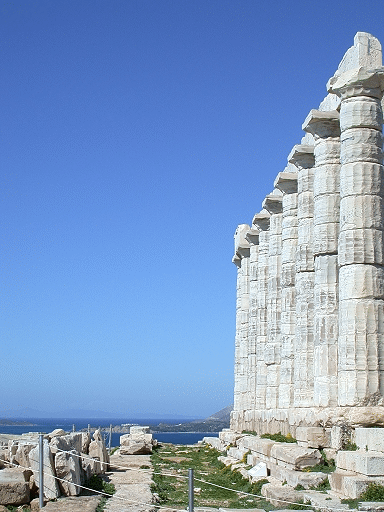
Incredible as it may sound, only seven times has someone ever managed to successfully image the solar analemma as a
multi-exposure on a single piece of film. An analemma is basically the figure "8" loop that results when one observes
the position of the sun at the same time during the day over the course of a year. As a result of the earth's tilt about
its axis (23.5°) and its elliptical orbit about the sun, the location of the sun is not constant from day to day when
observed at the same time on each day over a period of twelve months. Furthermore, this loop will be inclined at
different angles depending on one's geographical latitude.
As suggested by the relatively few number of successfully completed analemmas (seven total including the pioneering
photo in 1979), the imaging of the sun over local skies during the course of twelve months is considered one of the most
difficult and demanding astronomical phenomena to image. The analemma presented below is one of TEN analemmas
completed during a marathon started in 2001 in an attempt to document the complete range of analemmas from sunrise
to sunset (see here). It is further unique as it represents
the seventh of eight analemmas ever imaged during a single calendar year and also the ninth analemma ever imaged in
Greece.
Note: The animated motion of the analemma sun below was constructed from the original film
negative containing the 46 single exposures. Its purpose is to illustrate the wandering motion of the sun during twelve
months and whose net motion is described by the analemma curve or "figure eight". The bottom apex point represents winter
solstice whereas the first solar disk to the immediate upper-left is the start of January and where we observe the gradual
and steady increase in the sun's altitude from day-to-day. This increase continues into February and March and, by
mid-April, we have reached the cross-over point between the two loops. The sun continues its steady rise across
local skies but is now on the right portion of the upper loop and which peaks at the apex point of the upper loop on
summer solstice. It is at this point that the sun will now start another gradual and steady pace but this time with
declining altitude and where, during July and August, it will traverse the left side of the upper loop. We reach the
cross-over point once again but this time at the end of August with the sun now losing altitude at a greater pace while
it is now on the right side of the lower loop and which will climax with the winter solstice and the apex point once again.
Note: As noted elsewhere, more men have walked on the moon than have successfully
photographed the analemma (see S&T, Dec/2003: 73).
|
Body: Sun Mass: 332,900 x Earth Mean Eq Diameter: 109.1 x Earth Distance: 147 million km RA / Dec: 02h 13m 05s / +13° 23' Diameter: 32.03' Magnitude: -26.8 |
 |
Date: Jan 06, 2004 - Dec 20, 2004 13:00:00 UT+2 Location: Athens, Greece Equipment: Canon A-1 Canon FD 24 mm @ f/11 Fuji Super HQ 100 Baadar Solar Filter ND5 Exposures: 1/30 sec 46 multiple exposures + 1 foreground exposure Software: Photoshop V6 Processing: Layers Resampling (25%) JPG Compression |